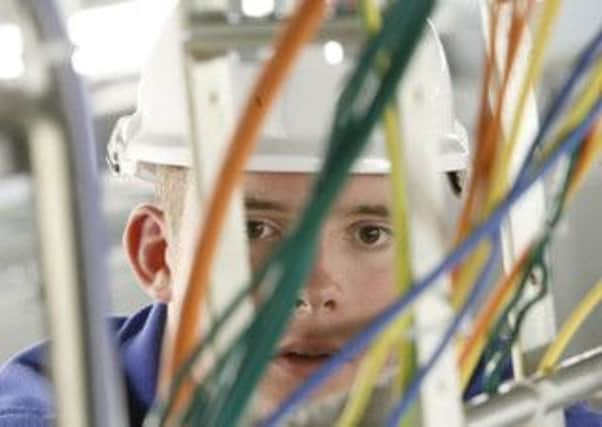Internet revolution set to come to homes but others to miss out


Yesterday a senior councillor said the deal would mean there would still be homes and businesses in most parts of the county unable to access superfast links but, if agreed, it would represent a major step forward. Earlier this year the Yorkshire Post revealed how MPs warned that thousands of premises across North Yorkshire were set to miss out on access to the county’s new high-speed internet network, because the Government had failed to demand it be rolled out to all parts of the countryside.
Investment in superfast broadband is already on course to deliver high speed connections to around 326,000 of North Yorkshire’s 379,000 homes and businesses by the end of next year. Now the Government’s Broadband UK agency (BDUK), and the European Regional Development Fund (ERDF), have offered grants totalling £5m to extend the scheme – on condition North Yorkshire County Council adds £3.1m.
Advertisement
Hide AdAdvertisement
Hide AdIf backed by the county council’s executive on Tuesday, some 93 per cent – or 352,000 premises - in England’s largest county will have access to high-speed broadband. The remaining 27,000 premises will not get superfast speeds but will have access to internet services of at least 2 megabits per second, with further plans being developed to improve speeds for those who miss out.
“This is a very tempting offer to extend the coverage of superfast broadband,” said Coun Carl Les, the chairman of the Superfast North Yorkshire programme.
“There would unfortunately still be premises in most parts of the county which wouldn’t get superfast access as a result of this expansion, but while it falls short of what would obviously be our ideal of 100% coverage, it would mean thousands more homes and business enjoying high speed connections by 2014, with all the associated economic and domestic benefits.”
The long-running problem of poor broadband provision in rural areas has been highlighted as a pressing issue in the county.
Advertisement
Hide AdAdvertisement
Hide Ad“Superfast broadband is a key driver to economic prosperity in the 21st century, and is viewed as of equal importance to the county’s well-being as all the other services the council provides,” Coun Les added.
“We are determined to do all in our power to ensure that as many residents and businesses as possible in North Yorkshire are in a position to exploit those opportunities. Where Superfast North Yorkshire is unable to make that provision, we are working very hard to find other means of bringing the technology to people.”
Julian Smith, Skipton and Ripon MP, yesterday urged the county council to contribute and: “ensure we can expand this vital project even further.”
BDUK is able to offer further funding because other counties involved in superfast broadband schemes have failed to deliver within the anticipated timescales. North Yorkshire was chosen as one of BDUK’s pilot areas.
Advertisement
Hide AdAdvertisement
Hide AdSpeaking before MPs at the Commons public accounts committee (PAC) in July, one internet firm claimed it had been part of a consortium which could have delivered superfast broadband to 100 per cent of the homes and business in North Yorkshire – but that Government officials “moved the goalposts” so that bidders did not have to reach the most rural properties.
Chief executive of UK Broadband Ltd, Nicholas James, told MPs: “BDUK changed the goalposts as we went along. So when we bid for North Yorkshire, we had to plan to deliver access to the whole county. The whole 100 per cent. When it was agreed (by BDUK)) that that could be reduced, it meant we couldn’t be as competitive.”
The claims were denied by Sir Jonathan Stephens, the permanent secretary at the Department for Culture, Media and Sport, who insisted it was “never the plan” to try to ensure 100 per cent coverage, and the Government approach had ensured the “lowest cost and lowest risk” to the taxpayer.